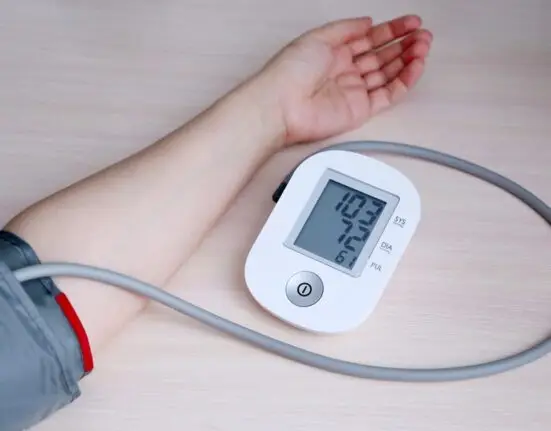High cholesterol is one of those health issues that often sneaks up silently. You don’t usually feel it right away, but over time it builds up and increases your risk of heart disease, stroke, and other complications. The good news? You can manage cholesterol through smart food choices. And no, it doesn’t have to feel like punishment — it’s more about balance, knowing what to eat freely, what to limit, and what to avoid completely.
In this article, we’ll break down cholesterol diet guidelines into three easy categories: Allowed, In Moderation, and Forbidden. Think of it as your daily food map for better heart health.
Allowed (Recommended Foods)
These are your go-to options. They not only support healthy cholesterol levels but also provide essential nutrients.
Lean Meats and Proteins
Chicken, goat, lamb, and poultry are safe sources of protein when cooked with little to no fat. Fish — especially white meat fish — is another excellent choice because it’s naturally low in saturated fat.
Dairy Choices
Opt for skimmed milk, low-fat yogurt, and egg whites. These give you protein and calcium without the heavy saturated fat that full-cream versions carry.
Whole Grains and Nuts
Brown flour, whole-grain bread, porridge, oats, and sweet corn should be part of your daily meals. Almonds and walnuts are also great because they provide “good fats” (unsaturated fats) that actually help reduce LDL cholesterol.
Healthy Snacks and Desserts
Yes, you can still enjoy treats! Low-fat pudding, low-fat ice cream, and homemade snacks made with less fat are fine. The key is in preparation — baking or steaming instead of frying makes all the difference.
Beverages
Tea and coffee with low-fat milk, as well as mineral water, are completely safe. For sweetness, choose sugar-free options like Aspartame instead of sugar.
Flavor Boosters
Herbs, spices, mustard, vinegar, and low-fat sauces not only add taste but also help you avoid heavy, creamy dressings that raise cholesterol.
💡 Tip: If you’re making salad, swap out cream-based dressings for vinegar and olive oil with a pinch of herbs. It tastes fresh and keeps your cholesterol in check.
In Moderation (Use Carefully)
Some foods aren’t completely off-limits but need portion control. Think of these as “sometimes foods.”
Oils and Fats
Polyunsaturated oils like sunflower, corn, soy, or olive oil are healthier options. Still, use them sparingly — “healthy oil” doesn’t mean “unlimited.”
Meat and Dairy
Low-fat beef, semi-skimmed milk, and half-fat cheese can be eaten occasionally. Stick to small portions to avoid overloading on cholesterol.
Starches and Grains
White flour, white bread, white rice, and fatty cereals are okay sometimes, but whole grains are always the better option. Low-fat biscuits also fall into this category.
Desserts and Snacks
Cakes, pastries, puddings, and fried sweets like Halwa and Gulab Jamun should be rare treats. Even low-fat ice cream can add up if eaten too often.
Drinks
Sweetened cola drinks, low-fat salted drinks, and chocolate beverages with added fat are best saved for special occasions.
Sugars and Condiments
A bit of sugar, butter, marmalade, or honey is fine once in a while. Same goes for French dressing, salad creams, and soy sauce — moderation is the magic word here.
💡 Tip: If you love rice, try mixing half white rice with half brown rice. It’s easier to adjust and adds more fiber.
Forbidden (Avoid Completely)
These foods are cholesterol troublemakers. Even small amounts can add up and harm your heart.
Fats and Oils
Butter, coconut oil, palm oil, and margarines that are not polyunsaturated are major sources of bad cholesterol. Ghee-fried foods also fall in this category.
Fatty Meats and Dairy
Avoid beef fat, visible fatty cuts of meat, full cream milk, condensed milk, cream, malai, full-cream cheese, and yogurt.
Fried and Processed Foods
Chips, potato crisps, and anything cooked in vanaspati or ghee are strictly off-limits. Pastries, croissants, and cheese biscuits might be tempting, but they’re loaded with cholesterol.
Desserts and Sweets
Deep-fried sweets like Halwa and Gulab Jamun, fatty puddings, and biscuits made with shortening or ghee are harmful. Dairy ice cream, Irish coffee, and full-cream chocolate drinks are also on the no-go list.
Dressings and Soups
Cream-based soups and cream cheese dressings should be avoided at all costs. These are silent contributors to cholesterol buildup.
💡 Tip: Next time you crave dessert, go for fresh fruit salad with a drizzle of honey instead of fried sweets. Your heart will thank you.
Bringing It All Together
Managing cholesterol isn’t about living a tasteless life. It’s about smart swaps and moderation. If you fill your plate with fresh fruits, veggies, lean proteins, and whole grains while cutting back on fried, fatty, and creamy foods, you’ll not only lower cholesterol but also feel more energetic overall.
The simplest way to remember?
- Eat more from the “Allowed” list.
- Keep “In Moderation” items for special occasions.
- Completely skip “Forbidden” foods.
A little discipline today can protect you from serious health risks tomorrow.
FAQs on Cholesterol and Diet
1. Can I ever eat fried food if I have high cholesterol?
Yes, but only occasionally and in moderation. Use healthier oils like olive or sunflower and avoid deep-frying in ghee or butter.
2. Is desi ghee good for cholesterol?
Despite popular belief, ghee is high in saturated fats and raises cholesterol. It’s best avoided if you already have high cholesterol.
3. Are nuts safe if I want to lower cholesterol?
Yes! Almonds and walnuts are great choices because they contain healthy fats that help lower bad cholesterol (LDL). Just don’t eat them in excess.
4. Can I replace sugar with honey?
Honey is natural but still adds calories and sugar. Use it sparingly. If possible, go for sugar-free alternatives like stevia or Aspartame.
5. How long does it take to lower cholesterol with diet changes?
It varies by person, but with consistent healthy eating and lifestyle changes, improvements can often be seen in 6–12 weeks.






Leave feedback about this